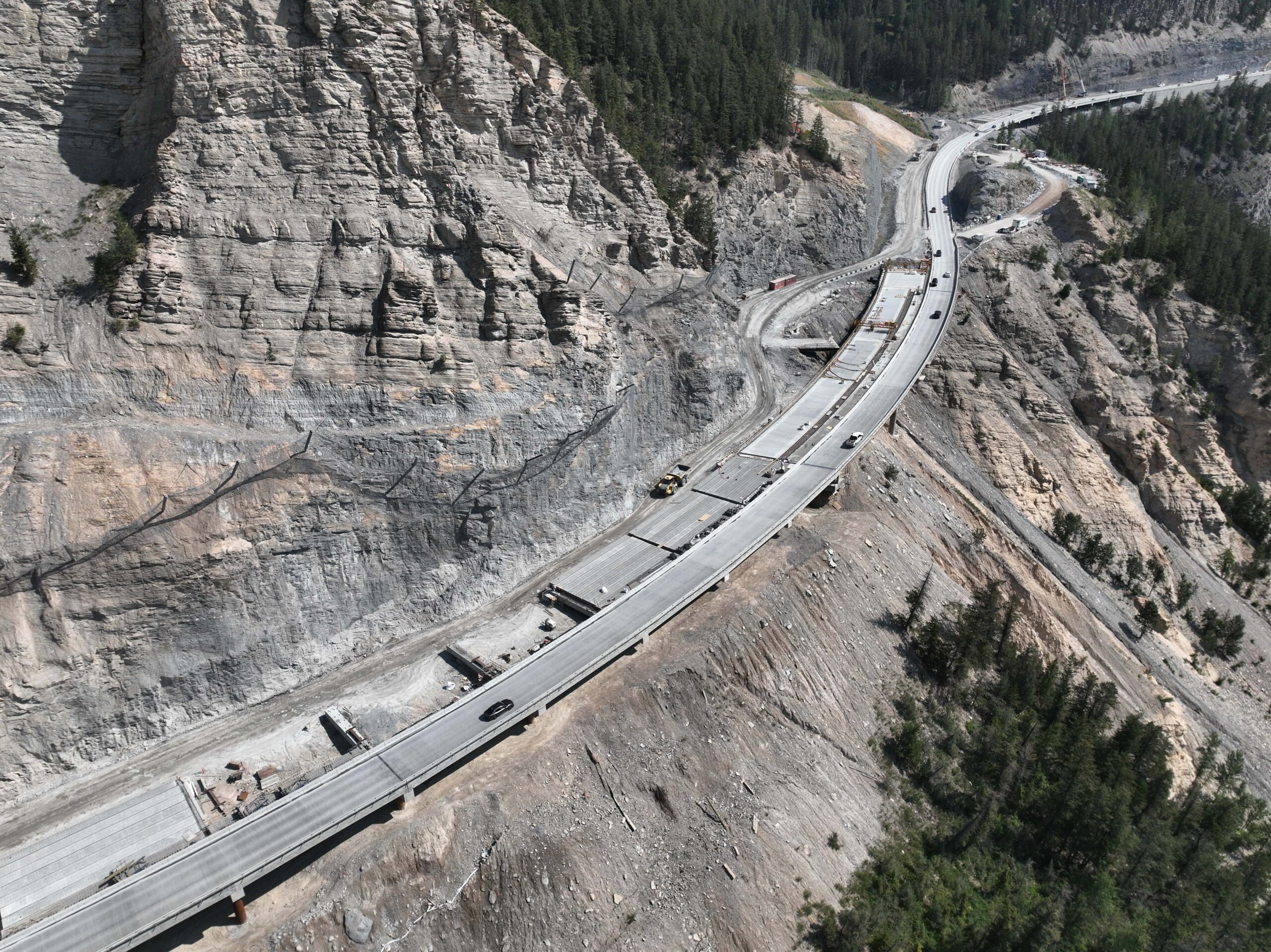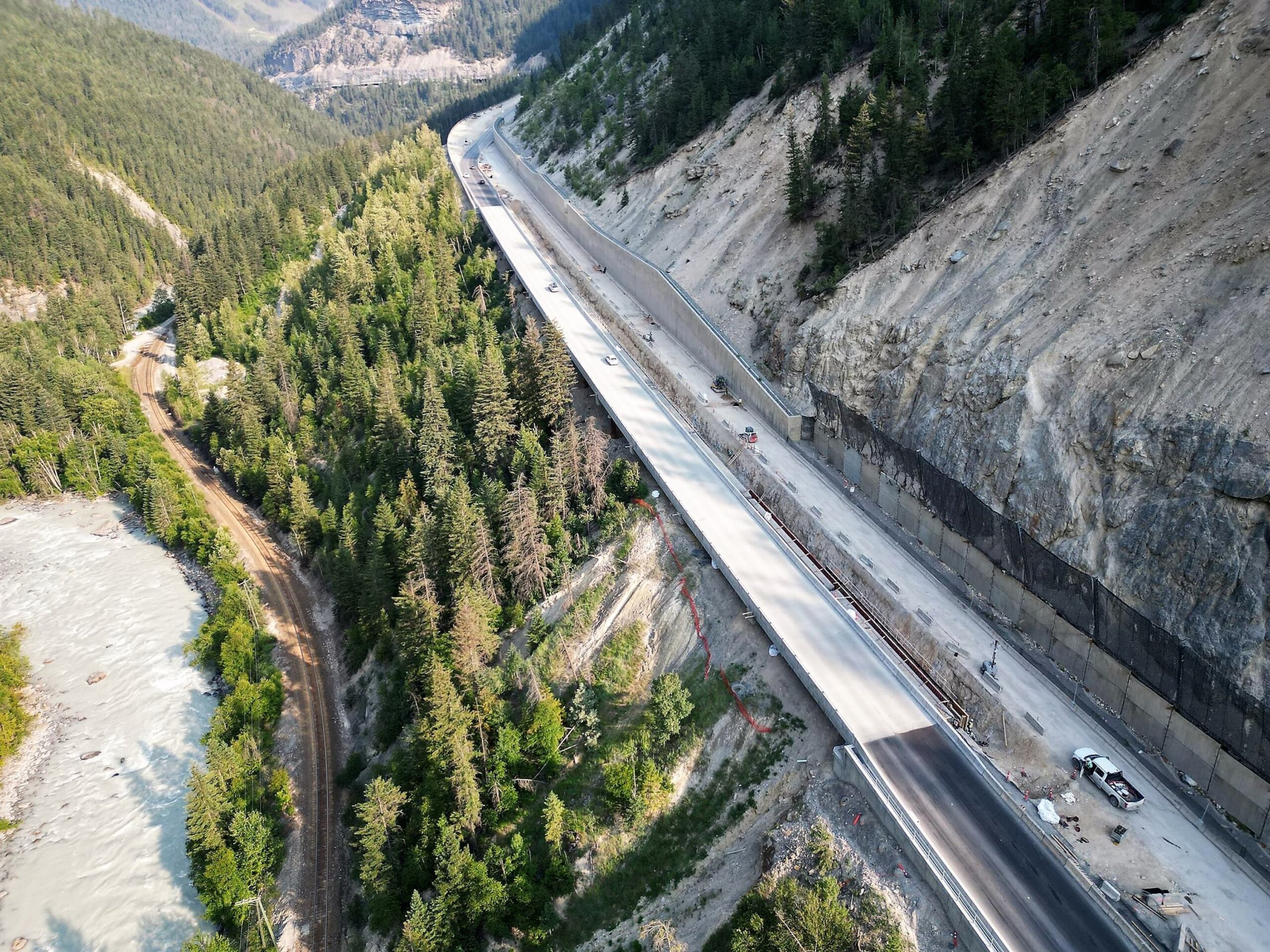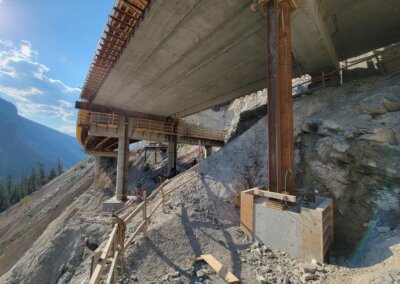About the Project
Highway 1 carries traffic through the extremely difficult terrain of the Kicking Horse Canyon east of Golden BC. Four-laning and safety improvements have been undertaken in a series of projects over the last 25 years. The final and most treacherous segment was taken on by the Kicking Horse Canyon Ph4 project. The 4.8km section of highway crossed a series of unstable slopes, active landslides, ravines, and avalanche paths. A key project goal was to improve the stability of the roadway. The conventional solution for this is to build retaining walls to support the roadway and strengthen the slope with steel piles in front of the walls. This was found to be an extremely difficult and costly option at this site due to difficult access for piling equipment, extremely close pile spacing requirements, and safety concerns. An alternative structural solution was developed based on a fundamental paradigm shift. Instead of trying to stabilize the soils, allow the slope to move under the structure and design the piles to resist the moving soil loads.
Accelerated bridge construction techniques were developed for nine Viaduct structures totaling over 1.8km of highway length. The Viaduct spans consist of side-by-side prestressed concrete box stringers, with a composite concrete overlay. These are supported by precast concrete cap beams on steel piles drilled into bedrock. This design eliminated most of the formwork and placing of rebar and concrete on site. Over 1,000 precast concrete components were transported distances up to 700 km. Box stringers are commonly used on short bridges, but numerous new techniques and details were required for use on long bridges, the longest segment being 625m. An innovative connection of the piles to the precast pier caps was utilized, which provides the strength and flexibility required for the complex thermal movements and loading. The design dealt with extreme loading due to lateral loads from landslides, debris flows, rockfall, and avalanches.
Approach
The Viaduct design aimed to reduce project costs and to shorten the construction schedule. As detailed design progressed, the Contractor determined that the Viaducts were going to be a better solution than stabilized walls, and adopted the Viaducts for the vast majority of the length of the roadway traversing low stability soils. Nine separate Viaduct structures were designed with a total length of approximately 1.8km. The design focused on simple and fast construction and minimizing on-site labour for formwork and placing of rebar and concrete through extensive use of precast concrete components. The components were simple and compact, with lengths and weights within limits of standard highway trucks. This allowed for economical shipping, and for easy storage and installation on the highly constrained site. Each pier is supported by 3 pipe piles drilled into bedrock. To connect the piles to the pier cap an innovative “drift-link” was developed. This consists of a pipe with a smaller diameter than the pile, cast into concrete inside the pile, and grouted into the cap above, drawing on design methodologies developed for offshore oil platforms. The length of the link was “tuned” to provide flexibility to accommodate thermal movements, as well as load-sharing between piles for landslide, rockfall, and avalanche loads. Highway traffic had to be maintained, so numerous details were developed to allow for staged construction and connection of the bridges in two halves.
Results
The project was successfully substantially completed on schedule, and the Trans-Canada Highway through the Kicking Horse Canyon opened to four-lane operation on November 30, 2023. The Viaduct solution significantly reduced technical, cost, and schedule uncertainties. This project represents a historic achievement in highway structure construction through some of the most challenging terrain in the Province. The innovative Viaduct design is central to achieving this historic feat of engineering.
Service(s) Provided
Structural
Geotechnical
Construction Engineering
Project Team (Consultants)
Parsons Corporation
Thurber Engineering
COWI
WSP
Project Team (Contractors)
Conforce
RapidSpan
Go back to projects in
View other projects from
Stay in touch with us
Subscribe to our mailing list!
Organization
Connect






